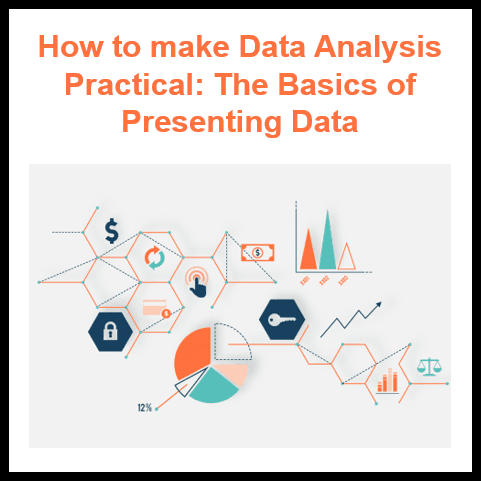Effective Data Analysis and Presentation of Results|2025
Effective Data Analysis and Presentation of Results: A Comprehensive Guide to Accuracy and APA Formatting for clear, credible, and professional research reporting.
Data analysis is an essential component in research across disciplines. Accurate data analysis, the interpretation of results, and the clear presentation of findings are vital for drawing meaningful conclusions. This paper provides an in-depth guide on how to perform data analysis with accuracy and present the results effectively in APA format. It covers various methodologies, statistical tools, and steps to ensure accuracy in data analysis, while adhering to the formatting guidelines of the American Psychological Association (APA) for presenting results. This paper aims to serve as a resource for students, researchers, and professionals in data-intensive fields, ensuring clarity and professionalism in reporting data findings.
Introduction
Data analysis is a systematic approach to investigating and interpreting data to discover patterns, relationships, and trends. It is an integral process in various fields, from business analytics to academic research, and is crucial for making informed decisions. The quality and accuracy of data analysis can significantly affect the reliability of research findings, making it essential to follow best practices throughout the process.
The accuracy of data analysis depends on a variety of factors, including selecting the appropriate methodology, using correct statistical techniques, and avoiding biases. Additionally, the presentation of the results plays a crucial role in how well the findings are communicated to the intended audience. One widely recognized format for presenting results, particularly in the social and behavioral sciences, is the American Psychological Association (APA) format.
This paper will explore the key principles of performing accurate data analysis and guide readers in how to present these findings according to APA formatting guidelines. It will cover the following areas: preparing the data, choosing the right analysis methods, ensuring accuracy, and formatting results in APA style.
Section 1: Preparing the Data for Analysis
Before embarking on the analysis itself, proper preparation of the data is paramount. This involves cleaning, organizing, and understanding the data. Inaccurate or incomplete data can lead to erroneous results, making this step crucial in the data analysis process.
1.1 Data Cleaning
Data cleaning is the process of identifying and correcting errors or inconsistencies in the data. Common issues in raw data include missing values, duplicates, outliers, and incorrect formatting. Addressing these issues is necessary for ensuring that the data is reliable.
-
Missing Data: Missing data can occur for various reasons, such as incomplete surveys or errors in data collection. Researchers must decide how to handle missing data by either excluding incomplete data points, imputing values based on the available data, or using advanced techniques like multiple imputation.
-
Outliers: Outliers are extreme values that differ significantly from the rest of the data. These can skew analysis results, especially in statistical tests. Researchers should identify outliers through visualizations like box plots or statistical measures and decide whether to exclude or adjust them based on the context of the analysis.
-
Duplicates and Inconsistencies: Duplicate entries or inconsistencies can arise during data entry. These should be detected and removed, ensuring the dataset reflects accurate and unique observations.
1.2 Data Transformation
Data transformation involves converting the raw data into a format suitable for analysis. For example, variables may need to be standardized or normalized, particularly in cases where measurements are on different scales (e.g., income and age).
-
Normalization: This process rescales the data to a common range, such as 0 to 1, to ensure that all variables are treated equally during analysis.
-
Encoding Categorical Data: Categorical data, such as gender or region, must be encoded numerically for most statistical analysis techniques. This can be achieved through dummy coding or other methods.
1.3 Data Exploration
Before conducting formal analysis, exploratory data analysis (EDA) is crucial. EDA involves summarizing the key characteristics of the data, often through visualizations like histograms, scatter plots, or correlation matrices. This step provides insights into the data’s distribution and relationships, guiding the selection of appropriate analysis methods.
Section 2: Choosing the Right Analysis Method
Selecting the right data analysis technique is essential for obtaining accurate and meaningful results. Different research questions require different methods, whether the aim is to examine relationships, predict outcomes, or test hypotheses.
2.1 Descriptive Analysis
Descriptive analysis provides an overview of the dataset by summarizing the basic features. Common descriptive statistics include:
-
Measures of Central Tendency: Mean, median, and mode, which describe the “center” of the data distribution.
-
Measures of Variability: Standard deviation and variance, which show the spread of the data.
-
Visualizations: Bar charts, pie charts, and box plots help represent the data graphically for easier interpretation.
Descriptive statistics are often used in exploratory phases of analysis to understand the data before moving on to more complex methods.
2.2 Inferential Statistics
Inferential statistics are used to make predictions or inferences about a population based on a sample. These methods include hypothesis testing, confidence intervals, regression analysis, and ANOVA (Analysis of Variance).
-
Hypothesis Testing: Researchers test null and alternative hypotheses to determine whether a relationship or effect exists. The p-value is often used to assess statistical significance.
-
Regression Analysis: Regression models, including linear and logistic regression, examine the relationship between dependent and independent variables.
-
ANOVA: ANOVA is used when comparing means across multiple groups to test if there are significant differences.
2.3 Machine Learning Techniques
For more advanced analysis, machine learning algorithms such as decision trees, clustering, and neural networks may be employed, especially for predictive analysis. These techniques are increasingly used in complex datasets to discover hidden patterns or make predictions.
Section 3: Ensuring Accuracy in Data Analysis
Ensuring the accuracy of data analysis requires careful attention to methodological rigor and avoiding common pitfalls that can introduce bias or errors.
3.1 Minimizing Bias
Bias can manifest in many forms, such as selection bias, sampling bias, or measurement bias. Researchers should ensure that their sample is representative of the population they wish to generalize to and that data is collected consistently.
3.2 Validating Results
To increase confidence in the results, researchers should validate their findings by using techniques such as cross-validation or splitting the data into training and testing sets when employing machine learning algorithms. Additionally, replicating results with different datasets or employing sensitivity analysis can confirm the robustness of the analysis.
3.3 Statistical Power and Sample Size
Statistical power is the likelihood that a test will detect an effect when there is one. Researchers should calculate the necessary sample size before beginning data collection to ensure that their study has sufficient power to detect meaningful effects.
Section 4: Presenting Results in APA Format
The American Psychological Association (APA) format is widely used for presenting research findings, particularly in the social and behavioral sciences. Adhering to APA guidelines ensures clarity, consistency, and professionalism in presenting data analysis results.
4.1 General APA Formatting Guidelines
-
Title Page: The title page should include the paper’s title, the author’s name, and institutional affiliation.
-
Headings: APA uses a five-level heading system. Main sections (e.g., Introduction, Methods, Results, Discussion) should be in bold, centered at the top of the page.
-
Tables and Figures: Tables and figures should be used to present complex data in an accessible format. Each table or figure should have a descriptive title and be numbered consecutively (e.g., Table 1, Figure 1).
4.2 Reporting Descriptive Statistics
Descriptive statistics should be presented in a table or figure, following the APA style guidelines. For example:
- Table 1: Descriptive Statistics for Participant Demographics
| Variable | Mean | Standard Deviation |
|---|---|---|
| Age | 34.5 | 4.2 |
| Income | 52,000 | 12,000 |
4.3 Reporting Inferential Statistics
When reporting results from statistical tests, the following format is typically used:
- t-tests: “A t-test revealed a significant difference in income between men and women, t(48) = 2.47, p = .02.”
- ANOVA: “An ANOVA was conducted to compare the means of three groups. The results indicated a significant effect, F(2, 97) = 5.64, p = .005.”
All statistical results should include the test statistic, degrees of freedom, p-value, and effect size, where applicable.
4.4 Discussing Results
The discussion section should interpret the results in the context of the research questions and previous literature. Researchers should explain whether the results support the hypothesis, highlight limitations, and suggest future directions for research.
Conclusion
Accurate data analysis is critical for obtaining reliable and valid research findings. Researchers must rigorously prepare and clean their data, select the appropriate statistical methods, and ensure the accuracy of their analysis. Once results are obtained, presenting them in a clear, standardized format like APA ensures that findings are communicated effectively to the research community. By following these guidelines, researchers can maximize the reliability and impact of their data analysis, contributing valuable insights to their respective fields.
Needs help with similar assignment?
We are available 24x7 to deliver the best services and assignment ready within 3-4 hours? Order a custom-written, plagiarism-free paper



.webp)
